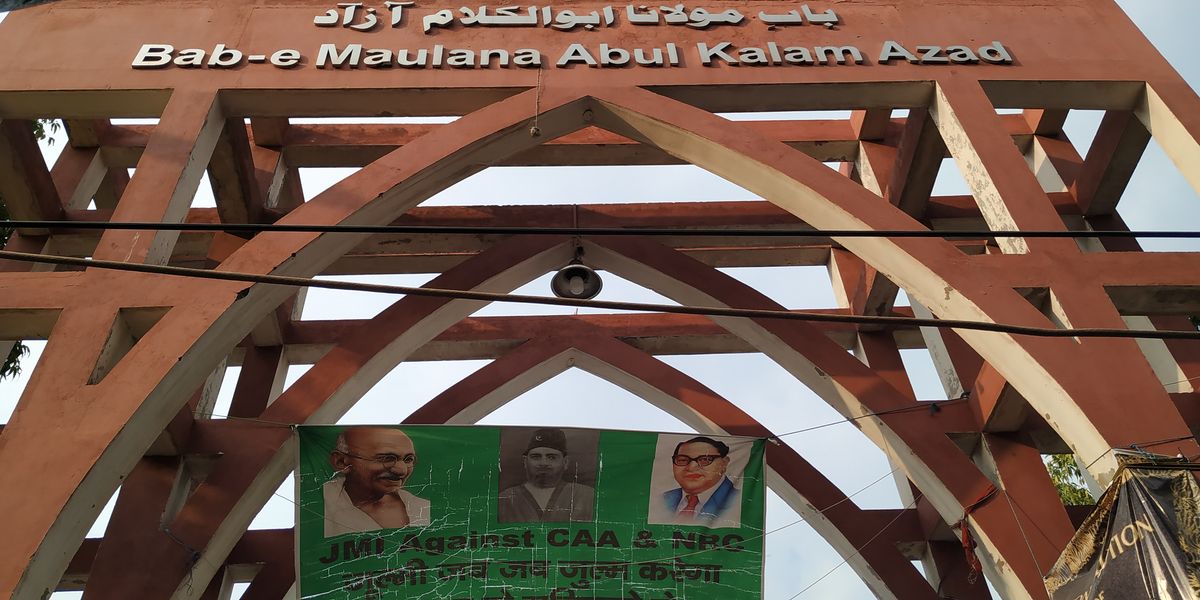For students of Jamia Millia Islamia university, being looked up on with suspicion has become a factor they have to contend with daily. The fear factor doubled when slogans like “Jamia ko saaf karo (clear up Jamia)” and “Shaheen Bagh ko saaf karo (clear up Shaheen Bagh)” were raised during the Delhi riots in February.
As a result, students at Jamia have become scared about disclosing their identity. The social stigma has been ongoing since the December 15 incident when Delhi police stormed inside the campus, students say.
“Whenever I tell people that I am from Jamia, they look at me as if I am from Pakistan,” says Versha Koul, who is pursuing a masters in journalism.
Parents have also apprehensive about the safety of their wards. Koul, who is from Jammu, says that her parents keep calling her every two hours. She feels her independence is being curbed because of uncertainties in the capital.
Students now also hesitate to show their college ID cards, say Arjun Ramachandran and Mobin, students of M.A. Mass Communication.
“Whenever I go somewhere far from my PG accommodation, my parents advise me not to carry my Jamia ID card,” says Yumna Mobin, a mass communication student who is from Kolkata. After the December 15 incident, she prefers to show her Aadhaar card over the Jamia ID card to prove her identity.
Ramachandran says he has become careful about revealing his affiliation to Jamia. “I am just pragmatic enough to not say that I am from Jamia,” he says, talking of how one student was allegedly beaten by the police on February 24 at Jaffrabad. The police, he said, had asked the student for his ID and when he showed his university ID card, he was “knocked down to the ground in the very next moment”.
Also read: ‘Trauma for Life’: Jamia’s Night of Horrors Continues to Haunt Students
Prabhat Tiwari, a student of development communication and a photojournalist, spoke of how he refused to show his Jamia ID card. “If I would have told them that I am from Jamia, they [rioters] would have thrashed me,” says Tiwari, who was in Maujpur in North East Delhi to document the violence on February 24. Since that day, he keeps his college identity hidden and reveals only his name and the name of his hometown, Ayodhya.
This much information, he says, fills the criteria of being a ‘good citizen’.
The stigma associated with Jamia students is not limited only to riot-hit areas. Many students feel anxious while traveling by metro or cabs. Maria Uzma Ansari, a history honours student, has begun to take a longer route to get to college every day. Cab and auto drivers, she says, show reluctance when she says she wants to go to Jamia.
“Ek auto wale ne mujhse bola ki main Jamia nahi jaunga, wahaan to insaan hi nahi rehte (an auto driver told me that he would not go to Jamia as humans don’t live there),” says Ansari, who now chooses to take cab till New Friends Colony and then takes a rickshaw to get to her college
Koul is terrified amidst the uncertainty, and has been ever since Shadab Farooq, a student at Jamia, was shot by a man brandishing a gun at anti-Citizenship Amendment Act protestors on January 30.
Jamia has also become a household name due to extensive media coverage, but a large part of it is negative. Misinformation about the university, spread by various news channels, has indirectly impacted students.
For example, Republic TV’s coverage on December 30, soon after the shooting incident, identified the shooter as ‘Jamia protestor’. Although they rectified it later by calling it a ‘mistake’, the damage has been done.
While students are outspoken about their affiliation with Jamia at protest sites, many of them are reluctant to reveal the information when it comes to most other interactions. So even as Jamia tries to limp back to some kind of normalcy, the fear of being attacked has only increased.
Salman Saleem is a post-graduate student at AJK MCRC, Jamia Millia Islamia
Featured image credit: Salman Saleem

